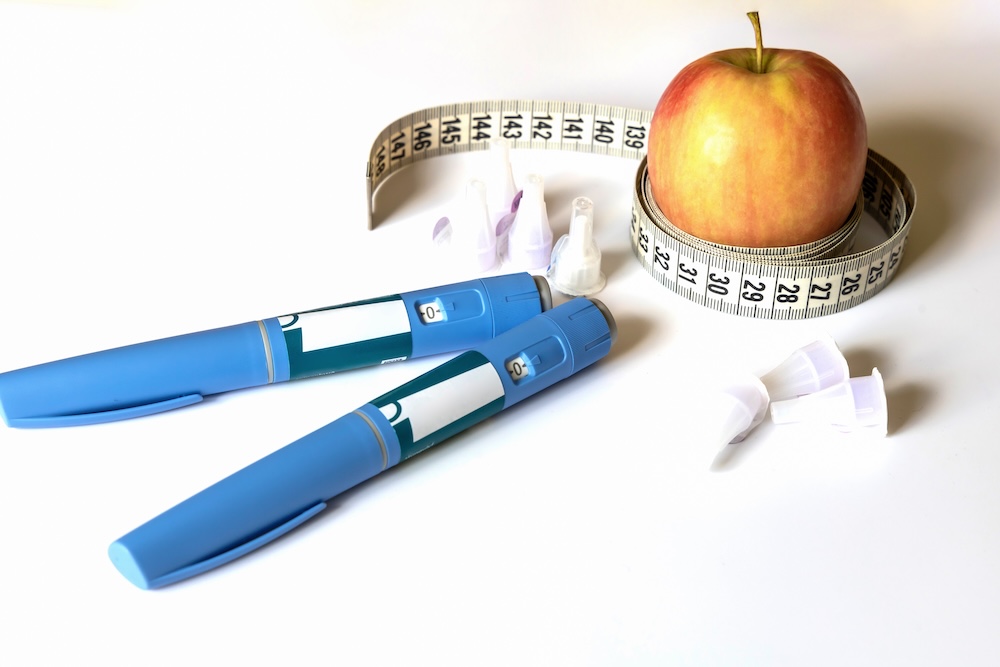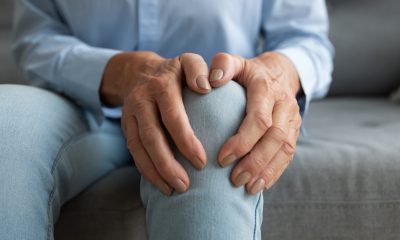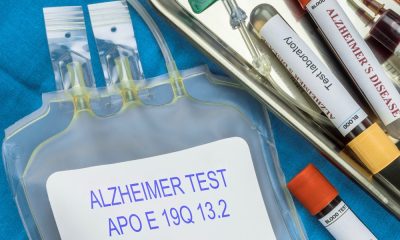News
New device may detect Alzheimer’s 17 years in advance

A new device can detect Alzheimer’s disease in the blood up to 17 years before any symptoms start to show.
The device uses immune-infrared sensors that detects the protein biomarker amyloid-beta misfolding. Amyloid-beta plays a central role in the pathogenesis of Alzheimer and has been postulated as a potential biomarker for the disease.
The study, published in the journal Alzheimer’s & Dementia: The Journal of the Alzheimer’s Association, analysed blood plasma from participants between the ages of 50 and 75 between 2000 and 2002.
Researchers compared 68 people who had been diagnosed with Alzheimer’s disease to 240 who had not received such a diagnosis. The sensors identified the 68 individuals who developed Alzheimer’s disease.
Professor Klaus Gerwert, founding director of the Centre for Protein Diagnostics at Ruhr-Universitat Bochum, said: “Our goal is to determine the risk of developing Alzheimer’s dementia at a later stage with a simple blood test even before the toxic plaques can form in the brain, in order to ensure that a therapy can be initiated in time.”
The finding of the research was backed by a comparative study that was conducted using complementary single-molecule array (SIMOA) technology, published in the same journal on March 2, 2022.
“Up to now, clinical trials for Alzheimer’s drugs have been failing by the dozen, apparently because the established plaque tests used in the trials don’t flag up the disease in time,” said Gerwert. “It seems that once plaques are deposited, they introduce irreversible damage in the brain.
“However, it is still controversially discussed whether this misfolding is the cause of Alzheimer’s disease or if it’s just an accompanying factor.
“For the therapeutic approach, this question is crucial, but it is irrelevant for the diagnosis. The misfolding indicates the onset of Alzheimer’s disease.”
Technology
Weight loss jabs my only temporarily reduce ‘food noise,’ study finds
News
Childhood loneliness linked to increased risk of dementia, study finds

Childhood loneliness increases the risk of dementia in later life, according to new research.
Adults who recalled being lonely and without a close friend in childhood faced a 41 per cent higher risk of developing dementia, even if they were no longer lonely as adults.
People who frequently felt lonely without close friends during youth showed accelerated cognitive decline — a worsening of memory and thinking — and started middle age with lower scores on these skills.
Researchers from universities in China, Australia and the US, including Harvard and Boston universities, analysed data from 13,592 Chinese adults tracked from June 2011 to December 2018.
The critical factor was the subjective feeling of loneliness itself. Those who reported often feeling lonely as children had a 51 per cent higher dementia risk, even if some had close friends.
However, those who only lacked close friends but did not feel lonely showed no significant difference in risk.
Nearly half of roughly 1,400 adults in the study reported being lonely and without close friends during childhood.
The 4.2 per cent who experienced both faced the highest risk of cognitive decline.
The link to dementia remained strong even for people who were no longer lonely in adulthood, suggesting early-life isolation can have lasting effects on brain health.
During childhood, the brain develops rapidly and is vulnerable to harm. Loneliness acts as a chronic stressor, flooding the developing brain with harmful hormones that can damage memory centres, and it reduces stimulation from social play and peer interaction that helps build robust neural networks.
A separate 2024 study of more than 10,000 older adults found that specific childhood hardships — including poverty, disruptive home environments or parental addiction — were directly linked to poorer cognitive function later in life.
Youth loneliness appears to be rising, partly linked to widespread social media use.
Among girls, 64 per cent aged five to seven, 67 per cent aged eight to 10, and 73 per cent aged 11 to 13 reported feelings of loneliness last year. More than a quarter of boys aged 11 to 17 in the US report feeling lonely.
Children face growing social isolation, with one in four Americans now eating every meal alone — a rate that has surged by over 50 per cent since 2003. Sharing meals with friends and family helps build bonds and positive memories in youth.
Fewer children are playing outside or joining team sports.
A recent study reported that one in three children do not play outside on school days, and one in five do not do so even at weekends.
The 2024 research found a direct, dose-dependent relationship between childhood adversity and cognitive problems in adults — the greater the early trauma, the greater the later risk.
For each significant increase in early trauma, individuals faced an eight per cent higher risk of daily memory issues and scored lower on objective tests of mental speed and focus.
News
Don’t miss you essential monthly agetech update

Your essential monthly update on agetech’s progress
Welcome to your monthly snapshot of the facts, figures, opinions, trends and challenges shaping the development of agetech.
Our new monthly tracker report aims to provide an concise update for busy agetech professionals on the many factors influencing your work.
Here you will find a concise breakdown of deals, developments and opportunities from the last 30 days; and insight and opinion from leading thinkers in the field.
We hope you find something useful and/or inspiring below – and welcome any feedback about what else you’d like to see included.

 News1 month ago
News1 month agoCholesterol-lowering drugs could reduce dementia risk

 Research3 weeks ago
Research3 weeks agoResearch reveals potential ‘two-in-one’ treatment for diabetes and heart disease

 News2 months ago
News2 months agoStudy finds link between circadian rhythms and bone resorption

 Wellness4 weeks ago
Wellness4 weeks agoMediterranean diet reduces painful inflammation, study finds

 News1 week ago
News1 week agoCommon diabetes drug may be cancelling out exercise benefits

 Markets & Industry1 month ago
Markets & Industry1 month agoGlasgow clinic launches Alzheimer’s detection test

 News3 weeks ago
News3 weeks agoUK aims for 92 per cent dementia diagnosis by 2029

 Research5 days ago
Research5 days agoOne in 20 children has high blood pressure, study finds


































